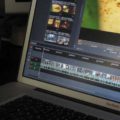Film companies are always very nervous about information of their projects leaking out. I’ve visited some where doors were shut as you walked down a corridor, or even unlocked ahead of you and locked behind you. This often means that they want to filter what their employees say if it is likely to end up in print. In this case, it meant conducting the interviews through a manager by email. Not ideal, but in the end the lead texture artists, David Abbot and Michael Cox, put so much effort into their answers that it worked really well.
My initial questions explored the size and scope of their work, the process, the challenges and the specifics about using the product. I also tried to understand what they were trying to achieve, the creative challenges and ultimately their motivation and what they were most proud of.
I was looking for a range of ways of expressing how the product met their needs. There are a hierarchy of needs and so I wanted to explore the different levels. The first was a simple numbers game of how many, how fast, how big, how complex, and how much time saved; all of these things need concrete numbers for them to make sense. Above that is the qualitative benefits of being able to achieve a better result with the product than without it. These are creative people so the quality of their work is really, really important to them. Finally the motivational aspects of the pride in their work. Michael came up trumps when he wrote, “Seeing these shots still sends shivers down my spine”. Wow, we don’t often get to talk about a technology product that has that impact on its users!
A case study needs to talk directly to your prospective users and customers, so it needs to express those needs and benefits in a language that they understand. Using the right terminology and explaining things with the right expressions is so important to achieve that resonance. Of course, the customers (those making buying decisions) may be different from the end-users, and may need different evidence and language. I also had to remember that I was writing as The Foundry and so the voice had to be theirs, not mine.
Ultimately the stars of your case study should be the users and what they achieve, not the details of the product. If you want to communicate the real benefits that the product offers, it is the users who need to speak to your potential customers, not you.
I hope you enjoy reading about Weta, Avatar, Mari and most of all, Michael and David.





